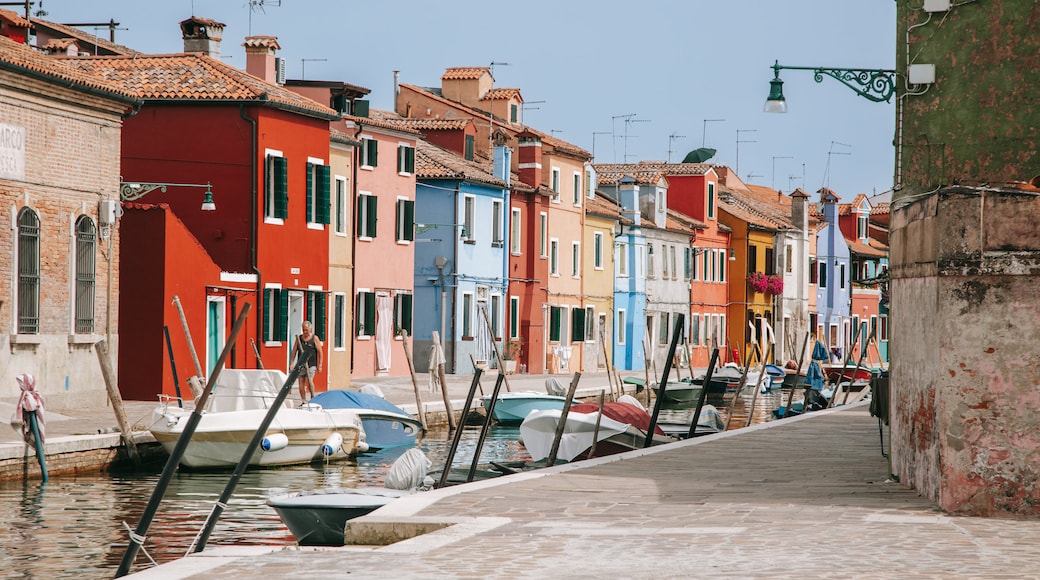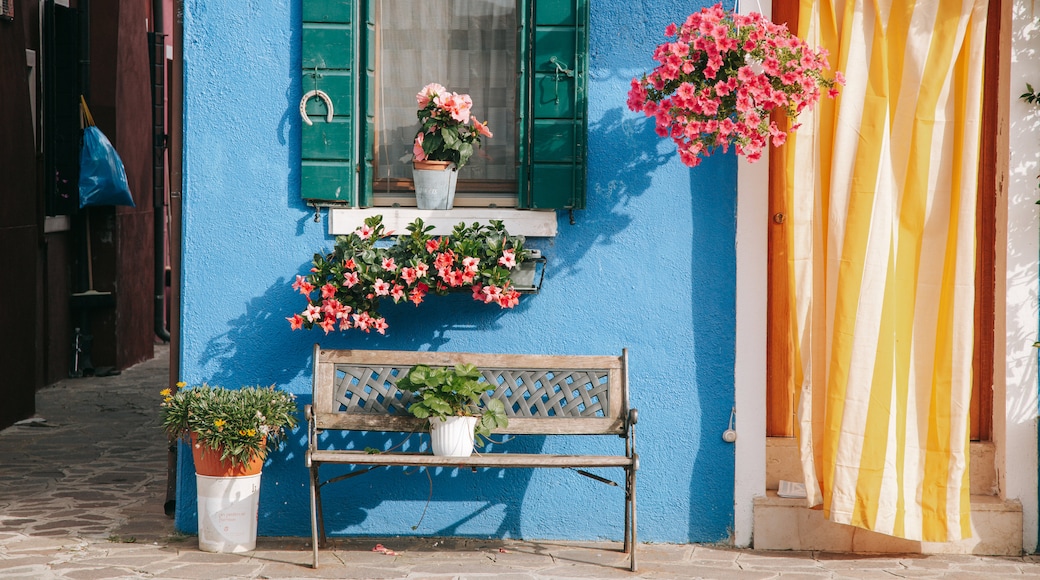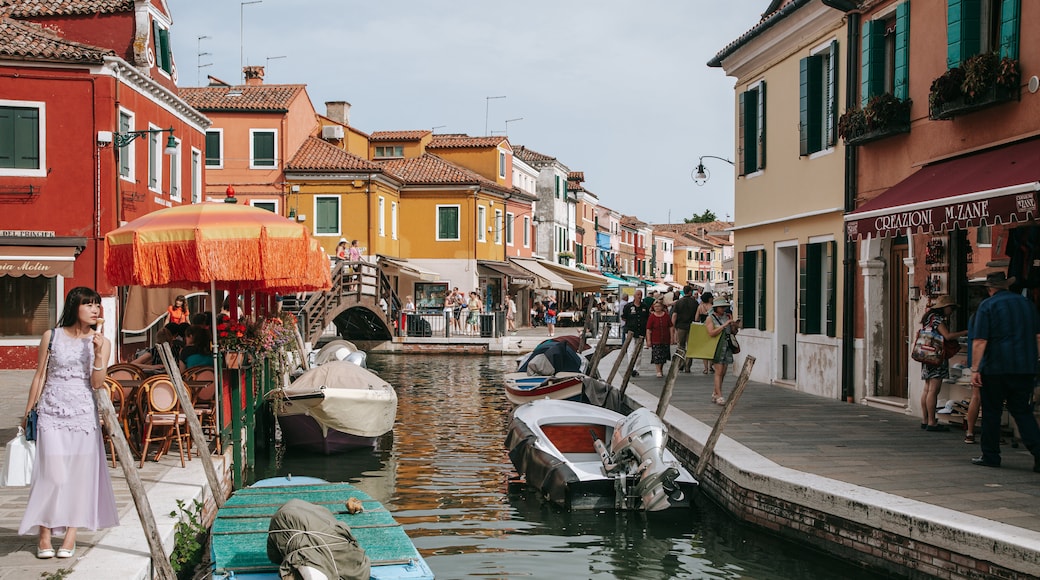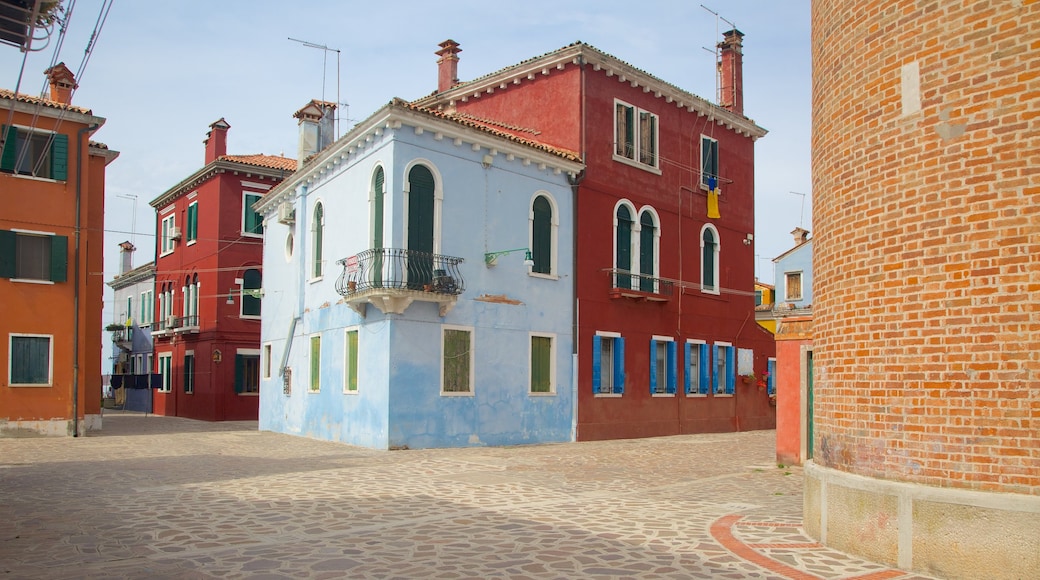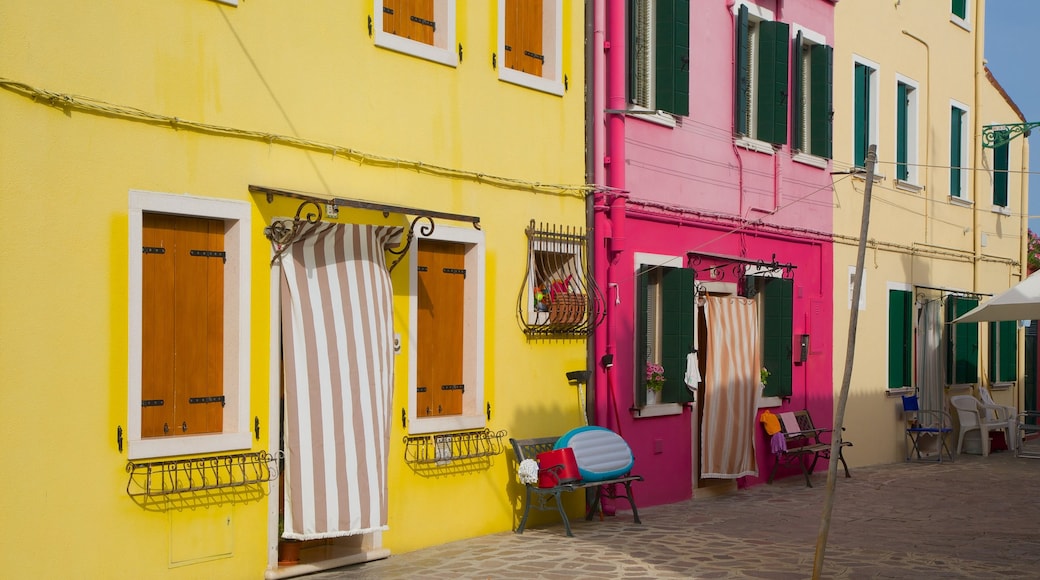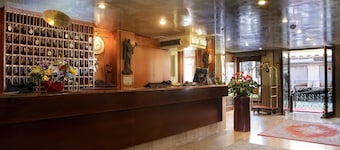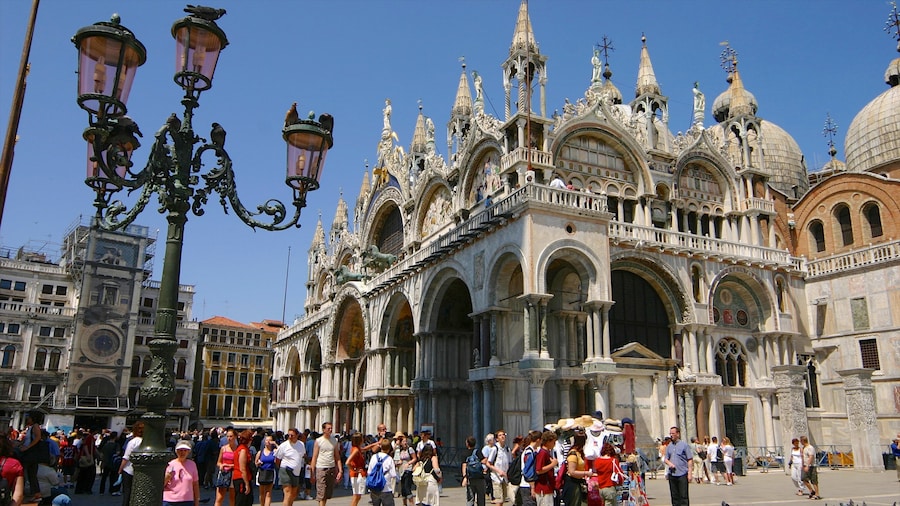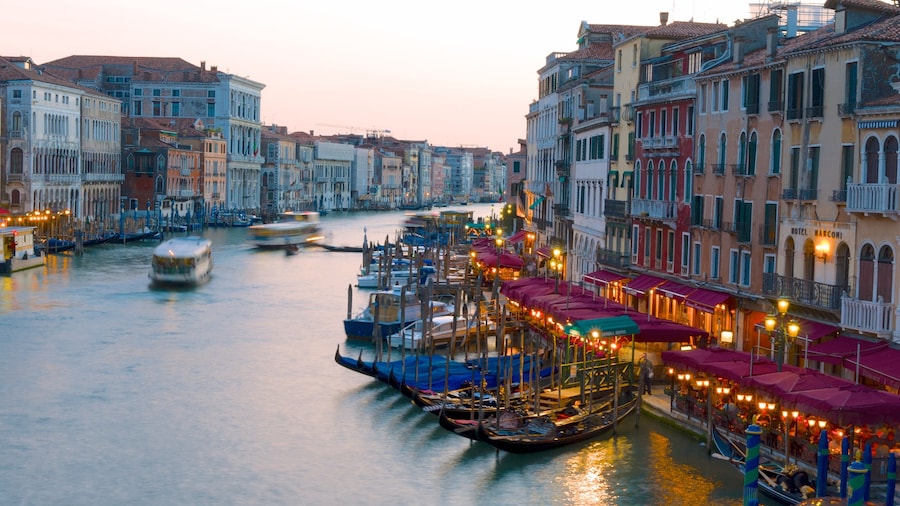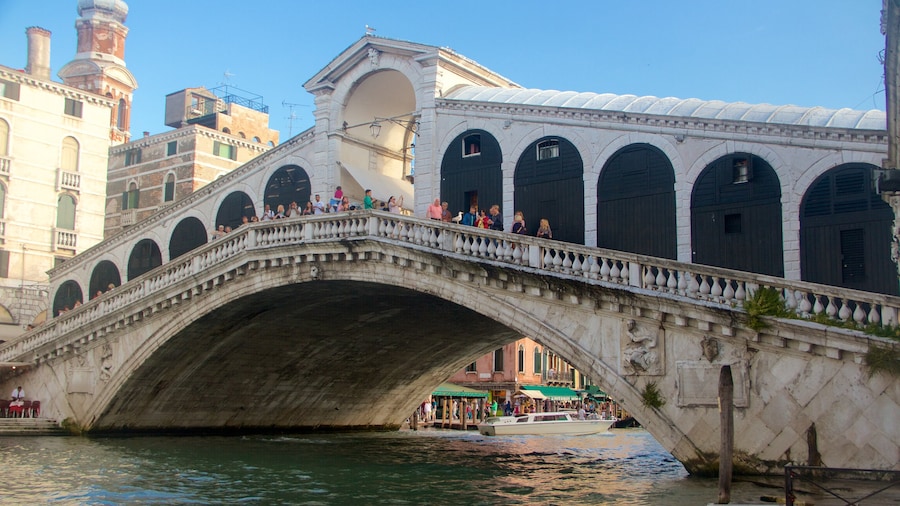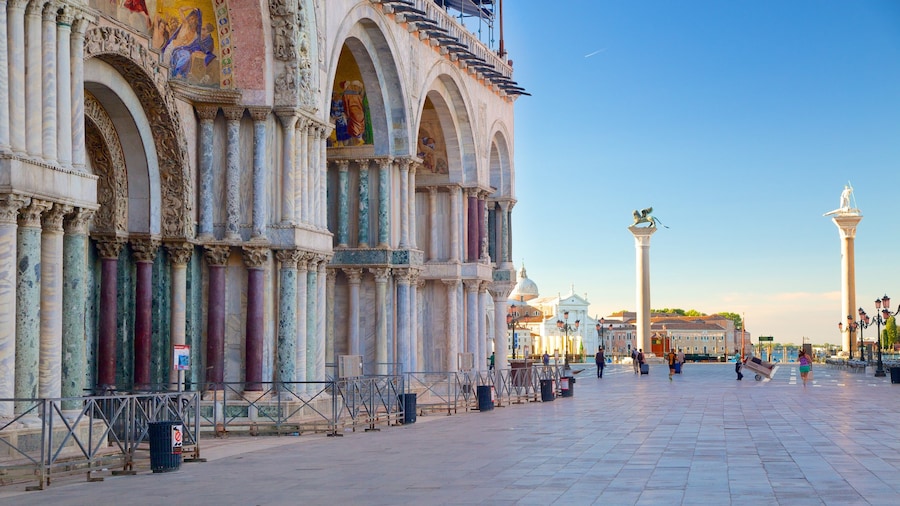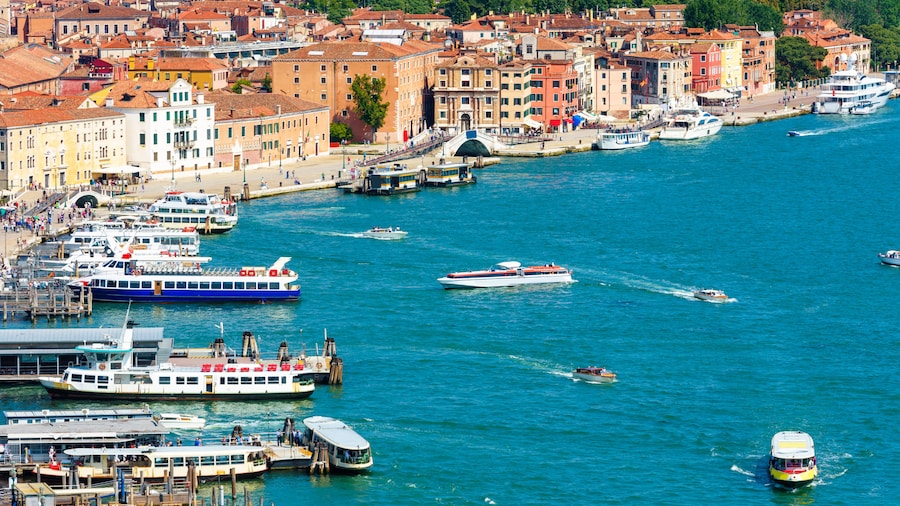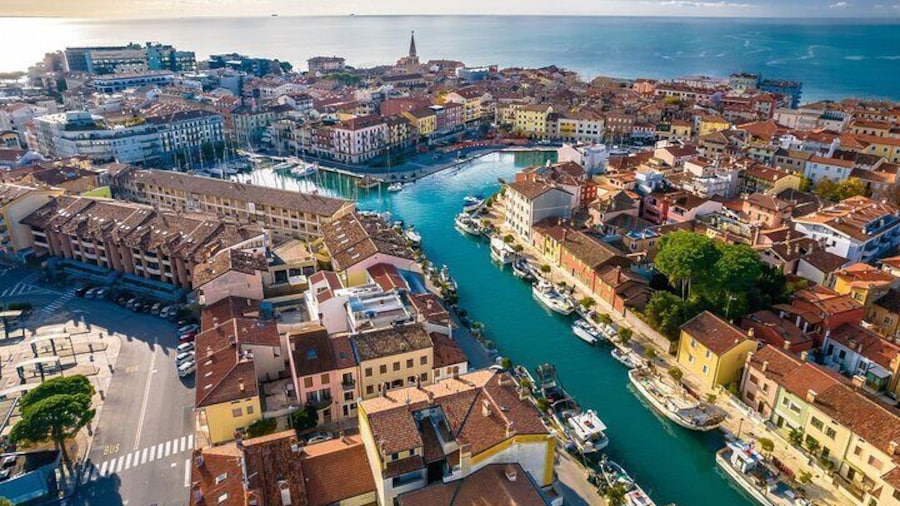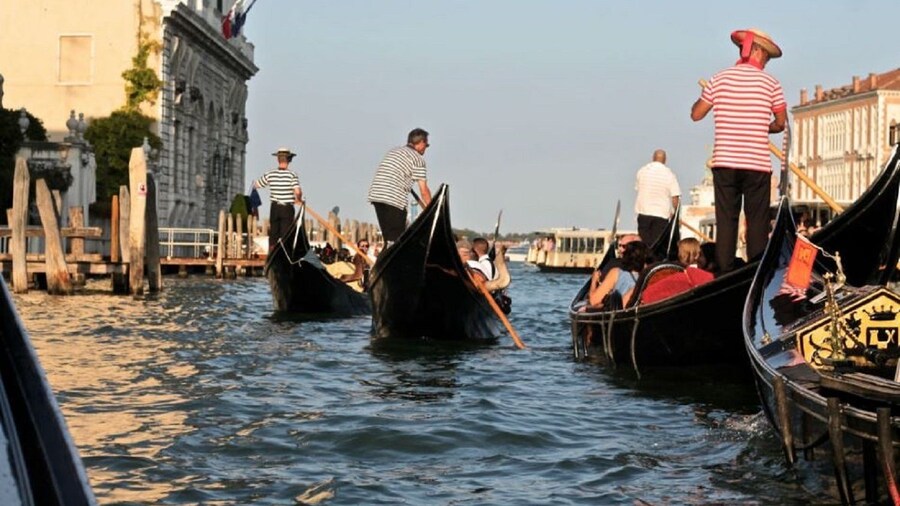Colourful houses line narrow canals at this charming island renowned for its delicate lacework.
Take a vaporetto (water bus) northeast from Venice towards the island of Burano. The first thing you notice as you cross the lagoon is the leaning bell tower of San Martino’s Church. Despite the Burano’s beauty, the reason many people come here is to see the production of lace, an ancient craft that made the tiny island quite famous. You can still see lace being made by hand here today, as it has been done since the 15th century.
Once you step onto the island, home to 3,500 or so residents, you’ll notice the intense colors of the small, square houses along the canals, with their flower boxes and shuttered windows. Legend has it the houses were originally painted in bright colors so that fishermen could see them as they returned from the sea with their catch. These days, the council determines what color a Burano resident can paint their home. The striking color palette reflected in the waters of the canals makes a great photo opportunity.
Just like Venice, Burano is actually made up of small islands joined by footbridges. You can easily explore all four islands on foot in a couple of hours. Make your way to the main street, the Via Baldassare Galuppi, to buy the handmade lace goods that the island is so famous for. At the south end, you’ll find the Lace Museum, a small building with collections from the Burano Lace School of the 19th century. Watch videos that explain the art behind lace making. The iconic15th-century leaning bell tower is at this end of the street.
When you stop for refreshments, try the traditional Burano esse or bussolà, similar to a cookie.
Burano is located in the Venetian Lagoon, about five miles (eight kilometers) north of Venice and linked by a long bridge to the island of Mazzorbo. The 40-minute vaporetto journey from Venice is very scenic and leaves every half hour from the Fondamente Nove.
